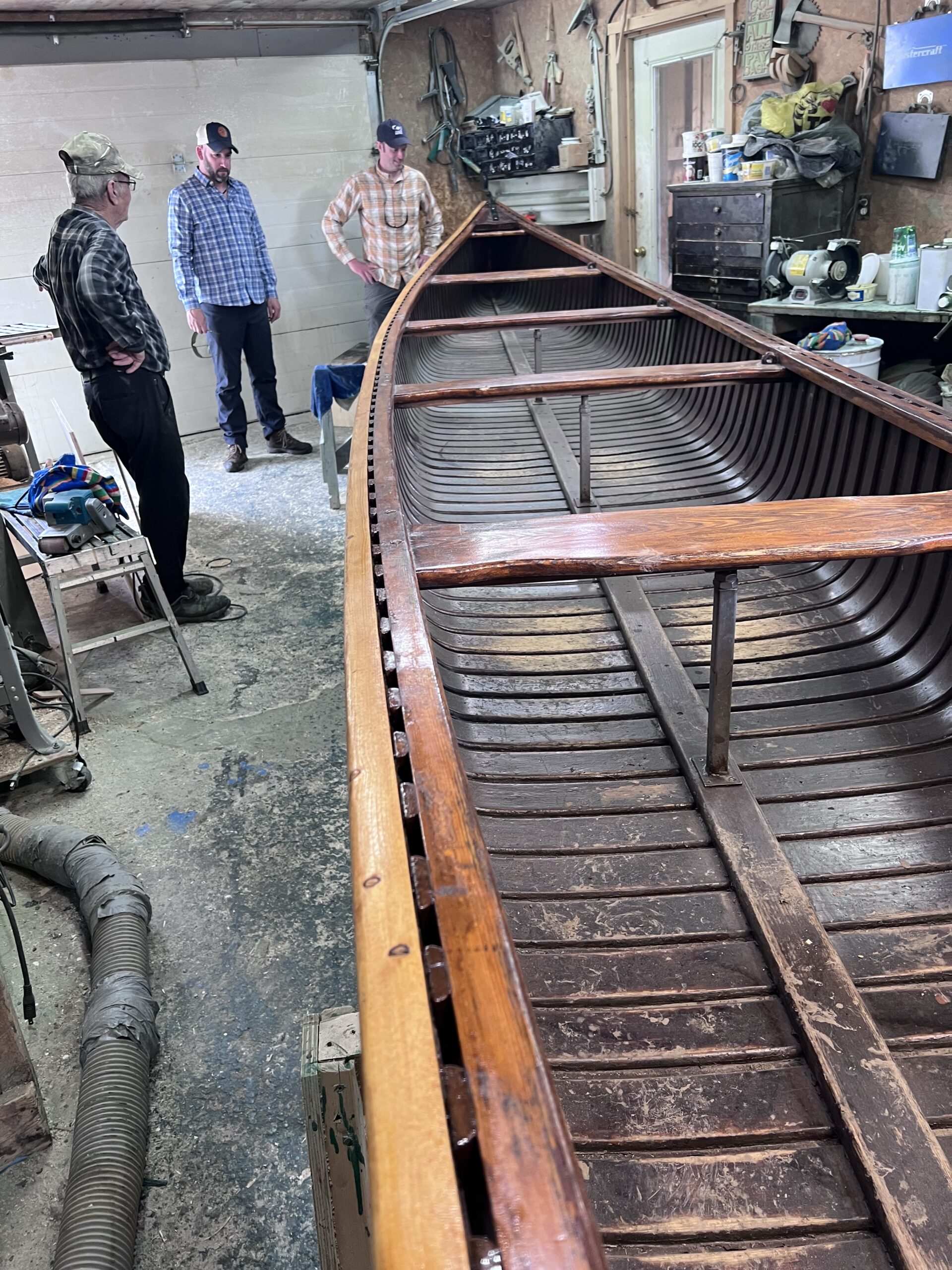
Subscribe & stay up-to-date with ASF

We left the highway outside of Ste-Madeleine-de-la-Rivière-Madeleine to drive along a “chemin forestier” up into the foothills of Quebec’s Chic-Choc Mountains. As the road turned sharply, I cried out to ASF’s Director of Quebec Programs, Charles Cusson, “It’s open!” And it was. The locked gate was gone, and we were finally about to access a series of salmon pools on the lower Rivière-Madeleine that had been shut tight since 1640. Let me do the subtraction for you: that’s 383 years.
I wasn’t the only one who was excited about the opening of that sector of the river. We had just met the tiny town’s mayor, Joël Côté, on the north shore of the Gaspé Peninsula to get his reaction to the news. At present, the management of the lower sector of the river keeps five people fully employed, he told us. “It might not seem like much.” Côté nodded slowly as if to say that Charles and I might consider that insignificant. “But in a town the size of Ste-Madeleine-de-la- Rivière-Madeleine, that is very important. We want to preserve those jobs that exist now, but most of all we want to develop this sector to attract tourists and help grow our economy.”
Will it draw tourists? Well, if mayor Côté’s description of the lower river is even close to reality, that should not be a problem.
“This section of the river is magnificent,” he said when telling us about his first-ever visit a few years ago. “It’s paradise.” And then, searching for more words, he simply shook his head and looked up toward the ceiling. “Wow.”
It’s understandable that Côté is eager to see the lower Madeleine become a keystone in his town’s growth. From ASF’s very beginnings, salmon angling—and the economic benefits it brings—has been a key to attracting support for conservation. Lee Wulff exclaimed often that “An Atlantic salmon is the king of gamefish.”
Wulff spoke from his own experiences as a fisher, guide and outfitter in Newfoundland. He saw first hand the importance of Salmo salar to the smallest settlements, in the most out-of-the-way places, far from city centres where jobs are easier to come by. Following in Wulff’s footsteps, another early ASF pioneer, T.B. Happy Fraser, published article after article in the Atlantic Salmon Journal in the 1950s and ’60s about the economic benefits of salmon angling.
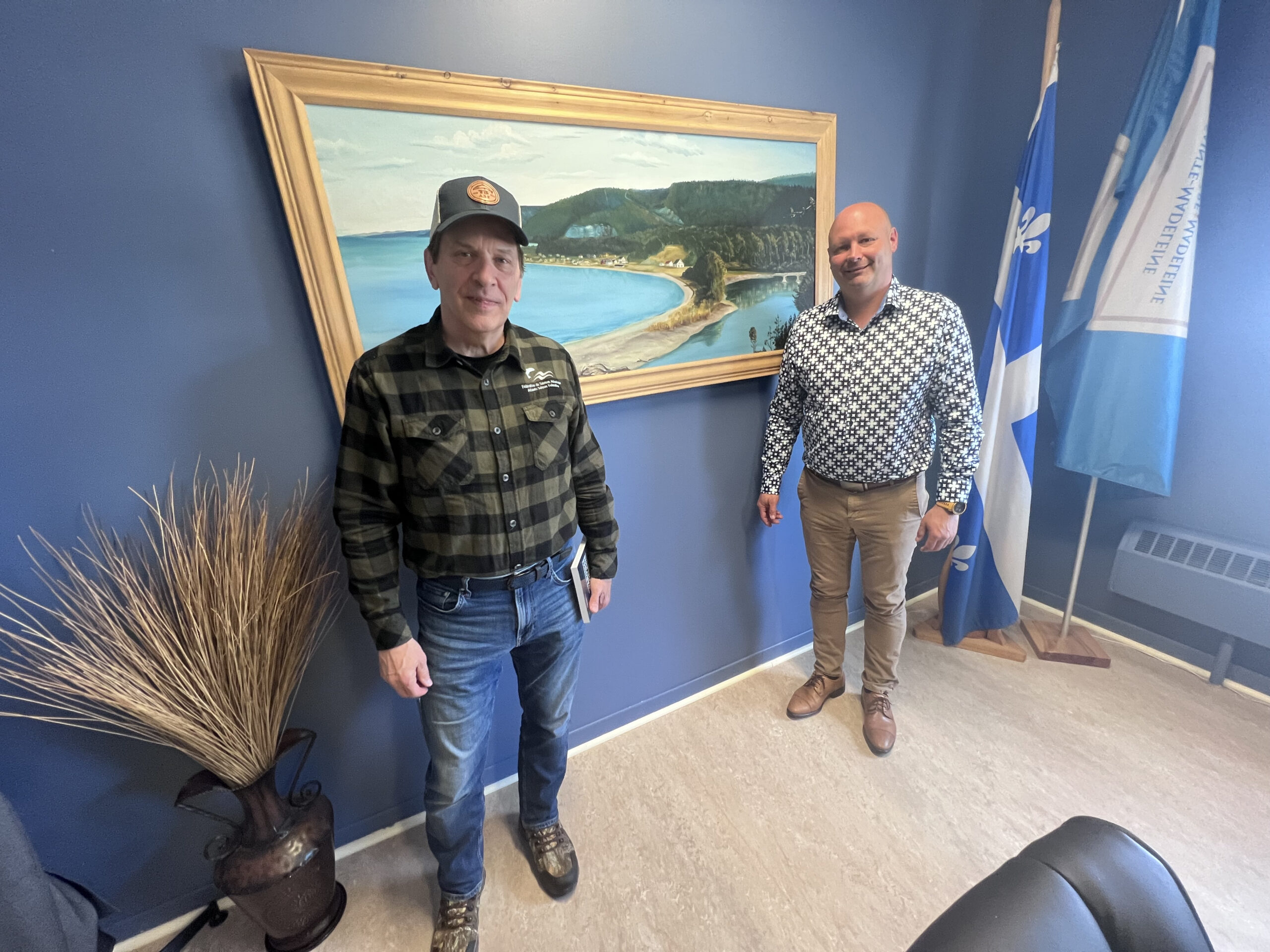
Fittingly, on this road trip on ASF’s 75th anniversary year, we didn’t have to wait long to witness first hand the economic importance of the annual return of salmon. Our first stop was in Rimouski at l’Atelier du moucheur. Charles needed to pick up a rod he’d ordered. The place was busy with customers examining flies, testing polarized sunglasses, trying on waders and of course exchanging intel on early- salmon-season conditions on nearby rivers.
Obviously, the high traffic was linked to the recent opening of the salmon fishing season, but I was curious how owner Mathieu Bouchard fared in the off-season. His response was somewhat of a surprise. “We are plenty busy,” he told me. “There are orders of flies to fulfill, and anglers and fly-tiers will also drop in to pass the time, of course. Winter can be long; talking salmon is a tonic for the cold, dark days.”
Neither Lee Wulff nor Happy Fraser ever mentioned the added value of dreaming about hooking an Atlantic salmon, but with the heightened attention paid to mental health issues these days, I wondered if it shouldn’t be considered (Editor’s note: The Journal considered it! See “Countdown to Salmon Season,” ASJ, Winter 2017). ASF’s interest in the economic benefits didn’t end with Happy Fraser and Lee Wulff. The Federation has always promoted the socioeconomic importance of salmon angling. In 2011, ASF commissioned Gardner Pinfold Consulting to examine the benefits salmon angling brings to individuals, businesses and communities. Michael Gardner and Gregor MacAskill combined receipted transactions—where money is paid directly for recreational and First Nations fishing or conservation activities—with a non-use calculation based on the public’s willingness to pay, through taxes, to restore and protect the resource. They came up with a value of
$255 million to the Canadian economy, a figure that is estimated at $320 million in today’s dollars and with significant improvement in salmon runs.
Atlantic salmon’s role in the cultural and historic fabric of Eastern Canada is as pervasive as it is impossible to label in strictly monetary terms. Salmon are so interwoven into a community’s very existence, the benefits can often be over- looked.
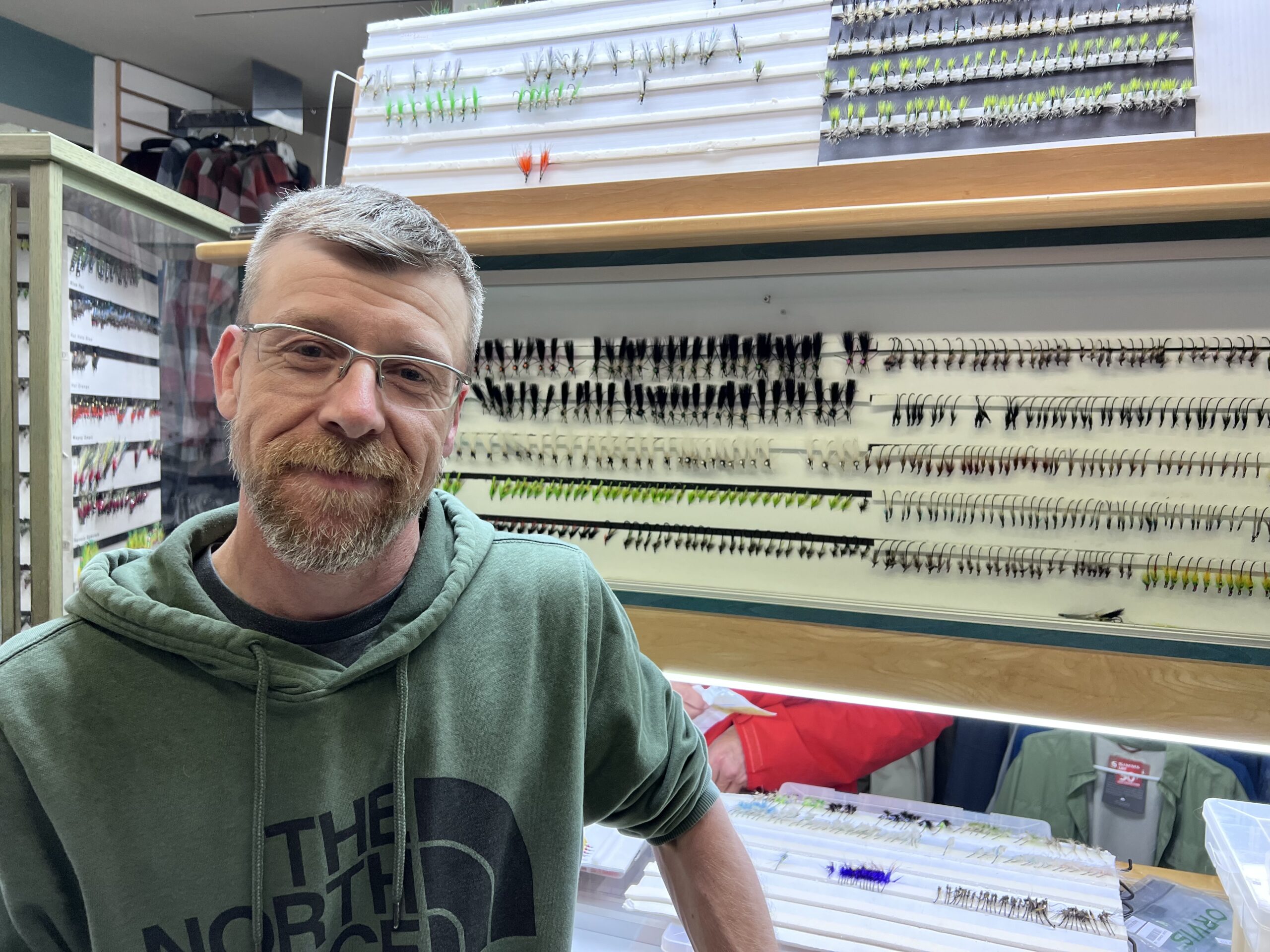
Our next stop was an important hub of Atlantic salmon angling in Quebec: Causapscal. We had a cabin at the Coulée Douce, a popular auberge, that overlooked the famous Forks Pool.
We arrived just in time to take part in the 150th anniversary celebration of the Matamajaw Salmon Club. In the very the heart of the village, the main clubhouse and out- buildings have been lovingly preserved and now harbour a store, a café/bar and a museum, all dedicated to the important role Atlantic salmon fishing has had, and continues to have, on the town. It was a very grassroots event, thus no federal or provincial politicians were present, but the old staff house of the former club was packed. Salmon anglers? We shared a beer with a contingent from the local hardware store; none fished. The local anglers were impressed that we had driven all the way from Montreal and Gatineau to take part in what they saw as just a regular community get-together.
Getting a refill at the bar, I offered a beer to a woman waiting to order beside me, who explained that she was not an angler. “What brings you here?” I asked. “I’m the mayor!” she laughed.
So back to our other small-town mayor—Joël Côté of Ste-Madeleine-de-la-Rivière-Madeleine; his words
echoed in my ear as we drove through the gates of a former private fishing and hunting empire owned by Domtar for its leaders. We headed down to the Rivière- Madeleine. “Paradise,” “magnificent,” Côté had said. And please don’t underestimate the importance of this: like the mayor of Causapscal, Côté is not a salmon angler.
When we got to where the road began to run along the river, Charles stopped the car and got out. I watched him as he looked out on the flow of water as it tumbled from rapid to pool to rapid until it disappeared into the forest. Côté had done it justice; the locale was wild, raw and magnificent, and now I understood his “wow.” “Salmon Shangri-La” was the best I could do. “I’ve been fortunate to visit many rivers, but this … ” Charles began, running out of words. He just stood there, mouth agape.
A government corporation, Investments Quebec, bought the Seigneurie from Domtar in 2009. There was much debate over how to best maximize benefits from this newly acquired territory.
The local town council, the ZEC de la Rivière Madeleine (which manages angling and access for the river above the falls) and interested Atlantic salmon anglers and conservationists around the province pushed for some kind of public management plan.
Sometimes it takes a bit of a shove to get a stagnant file back in the active drawer on a government desk. And in this case, the push came from Pierre Fitzgibbon, a “super-minister” in the Coalition Avenir Québec government. He holds the cabinet posts (yes, plural) of Minister of Economy, Innovation and Energy; Minister Responsible for Regional Economic Development; and Minister Responsible for the Metropolis and the Montréal Region.
Obviously with three portfolios like that, Fitzgibbon would be a difficult man to get hold of, especially to discuss such a minor issue as salmon angling. Unless of course he were a salmon angler.
As it turns out, Fitzgibbon is not only a salmon angler, but he caught his first salmon on the Madeleine.
Soon enough, in mid-2022, the lower Madeleine was entrusted to SÉPAQ, the Quebec government agency that manages parks and wildlife reserves.
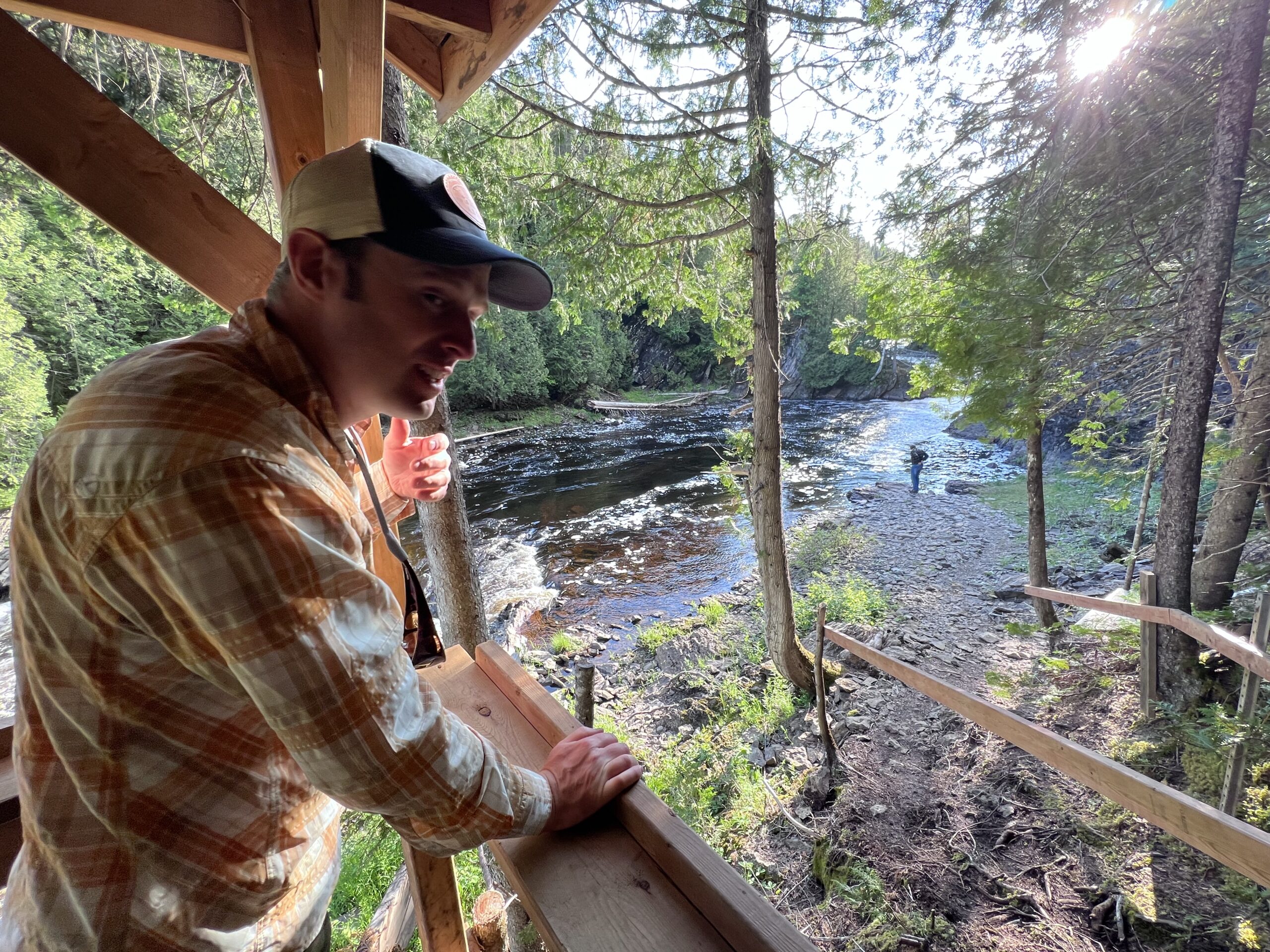

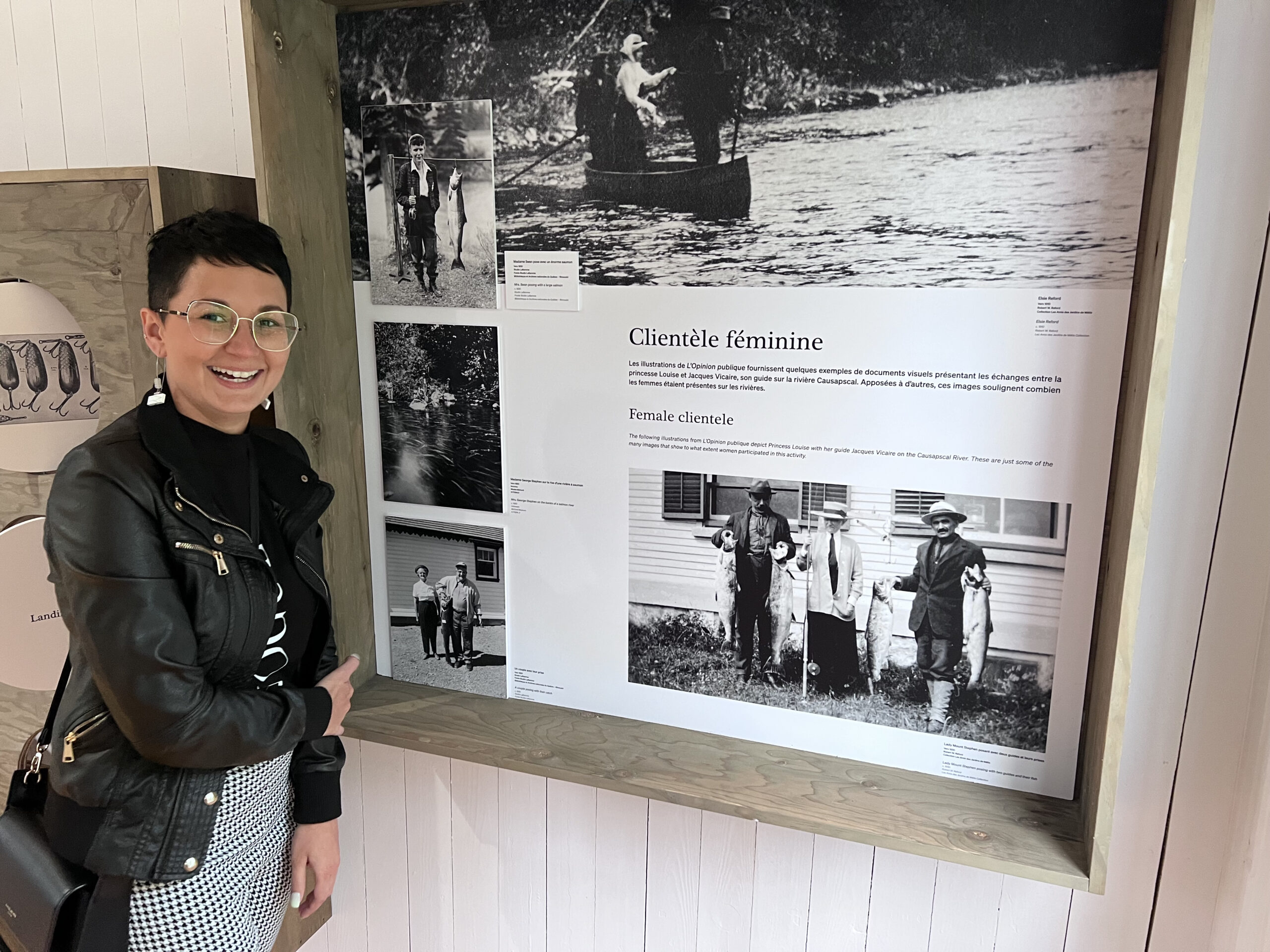
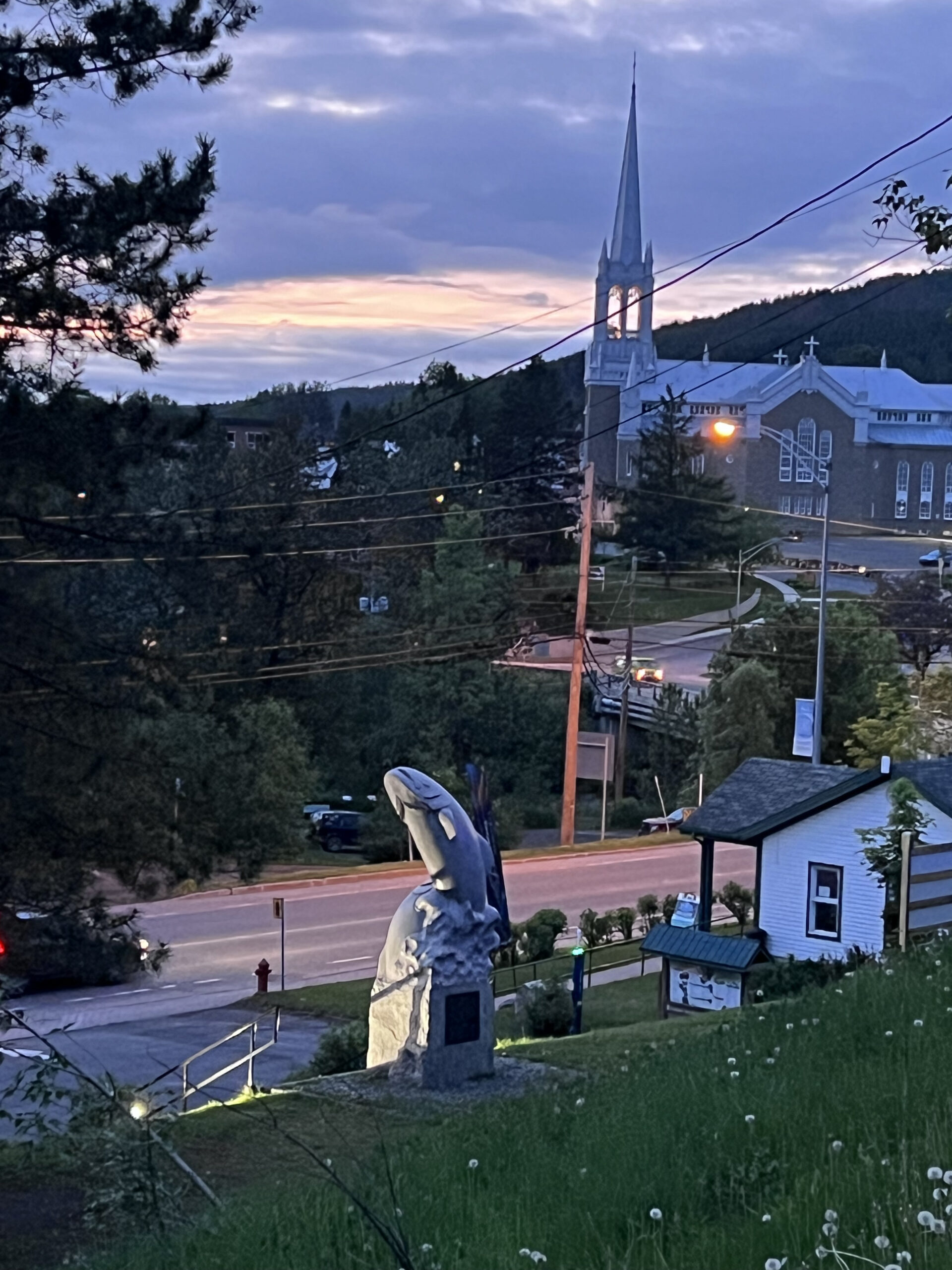
The timing of the decision to open that section of the river brought on certain challenges. So SÉPAQ went with a first-come, first-served reservation system on its website. Lucky anglers who got through were able to book three-day slots for eight rods, and daily limits were set at two killed grilse or three releases.
There were certainly no complaints from the anglers who were lucky enough to nab the opening days. It was no surprise that the fishing was excellent. We met one angler at Pool Number Five after we had made the long hike from the last pool, upstream. He had released a 6.8-kilogram (15-pound) hen and kindly agreed to send me a photo.
Not everyone was happy, however. There were complaints about the reservation system, and SÉPAQ was already communicating that this season would be a fact-finding one. When we stopped in at the SÉPAQ office in Mont St-Louis, we confirmed that changes were already imminent for year two. The manager, Dan Gagnon, had a solid background in salmon river management, having been transferred from the Matane Wildlife Reserve.
The online reservation system wasn’t his only headache. From a conservation perspective, there remained much concern over the retention limits on that section of the river. If eight anglers took two grilse a day, the totals would be significant. Charles was already on the phone with various groups who were questioning those high allowances.
Yvon Côté, now retired, was one of the top authorities in the Quebec salmon world and also a member of the Madeleine ZEC’s board of directors. He weighed in with his concerns over the limits. “The limits are too generous, and I’m worried about the salmon holding at Pool Eight,” which is better known as Slide Pool, he told me over the phone. Slide Pool is below the fishway at Grand Sault, and Côté was concerned that salmon rest there before attempting to enter the fishway tunnel, a project put in place by ASF’s Wilfred Carter back in the 1960s (see Carter’s Fish Pass, ASJ, Autumn 2014).
By sheer coincidence, our next stop was at a river that shares management between Indigenous and local non-Indigenous groups. The Cascapédia River has long
been seen as a prime example of sustainable Atlantic salmon management. The nerve centre is the “Society” office in downtown Cascapédia–St-Jules. I love stopping there; it’s like going home. Director General Darlene Sexton and office administrator Tammy Vicaire greet you like you’re a long-lost son.
Nowhere else is the history of Atlantic salmon angling so well recorded as in the adjacent museum, which once housed Buddy Campbell’s grocery store. Campbell and his lifelong friend Warren Gilker, along with other local heroes from the Indigenous, franco- phone and anglophone communities, laid the ground- work for today’s river administration. By constantly communicating and working together, the good citizens of the valley and surrounding areas ensure the river continues to serve both human and salmon populations well.
Can anyone fish the Cascapédia? Yes. Is it expensive? Of course. No one gives away Cartier diamonds! The Cascapédia is a jewel among salmon rivers, constantly offering up giant fish. Does the surrounding community benefit? Ask any of the hundreds of locals linked to the salmon resource through historical connections, guiding, guarding, or providing everything from rooms to rods and flies and other gear and the answer will be a resounding YES.
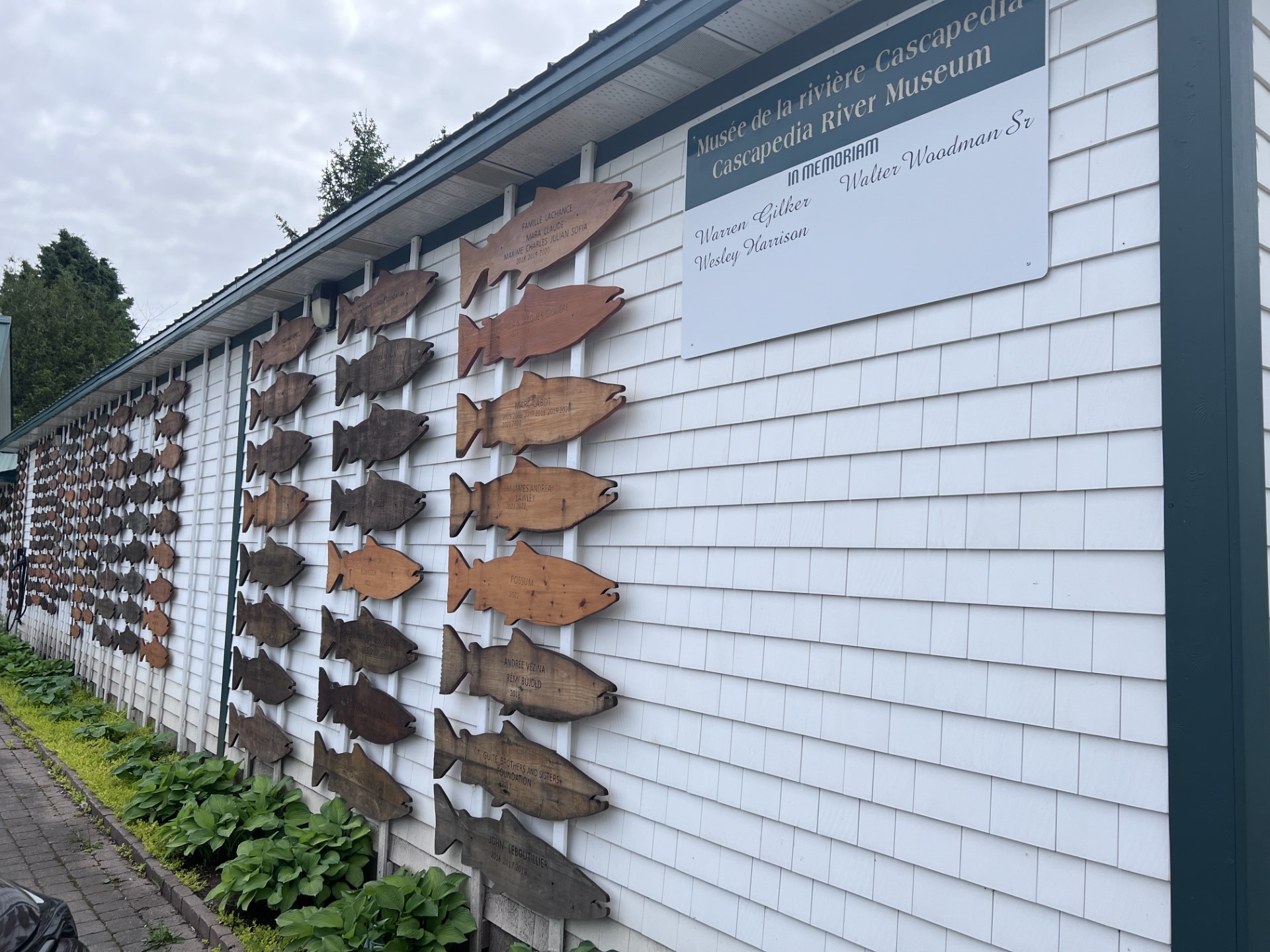
After we left the Cascapédia, we visited the Bonaventure. The ZEC there records more rod days than any other river in the province. The runs are stable. But there are problems. Many different users, including anglers, canoeists, rafters, kayakers and even tubers and swimmers, share the same environment. Well, “share” may be too mild a word. There has been friction, and all groups await an impending ruling from
a court case that was heard this past spring.
Our Gaspé tour came full circle back at the Coulée Douce in the village of Causapscal, where Charles had been drawn to fish a day on the river. I took the opportunity to meet with the Serge Collin, ASF’s director of New Brunswick programs, and Nathan Wilbur, ASF’s vice president of regional programs. We drove along the Restigouche and Upsalquitch rivers, visiting camps and talking to owners, guides and anglers.
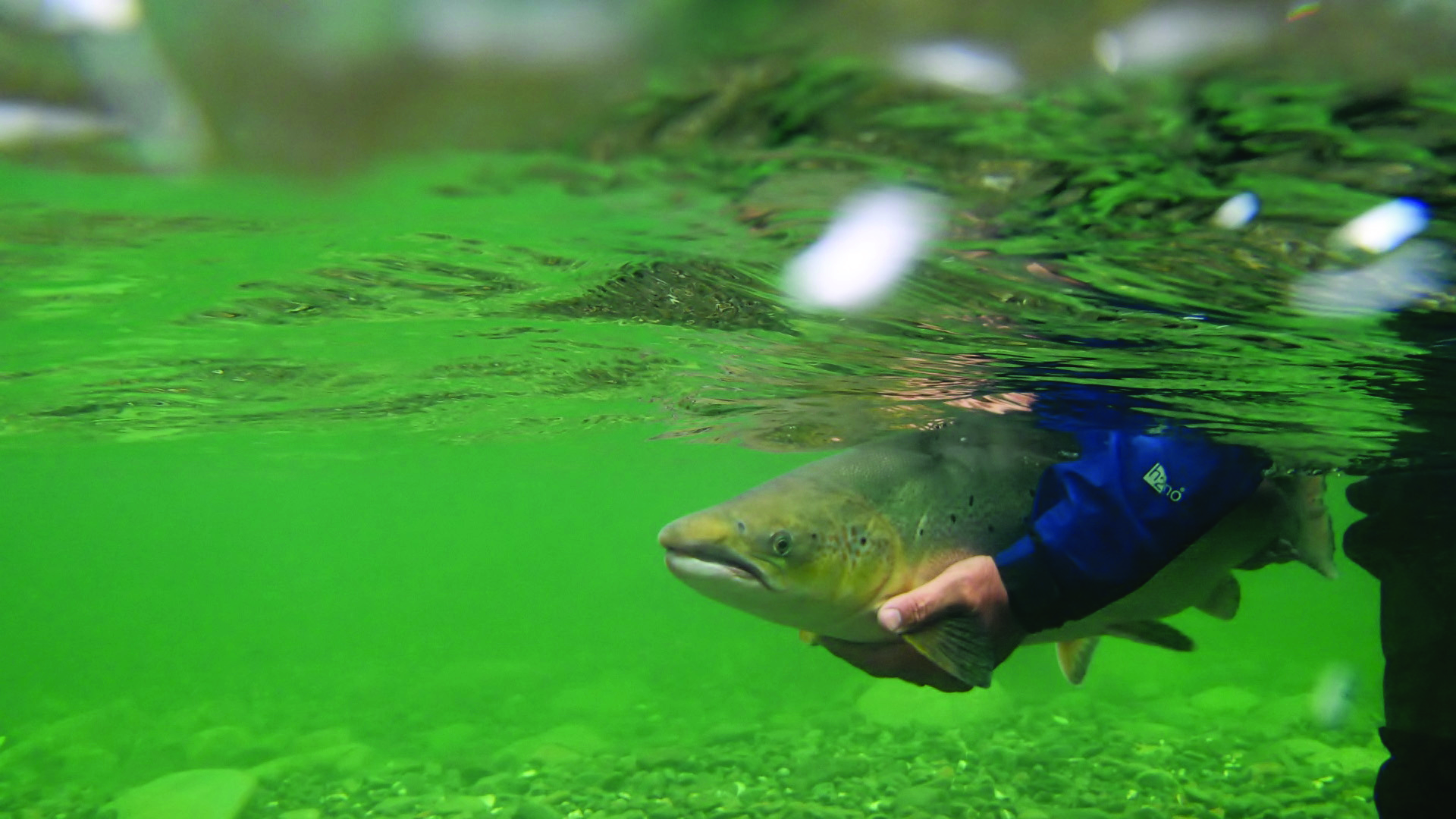
Our last stop was near the very end of a road at a small farm. Albert Nichol and his wife stopped tending to their vegetable garden to greet us. A century-old barn and lush pastures spoke of a simple but fulfilling existence far from any city. To supplement their farming income, Nichol builds canoes. He gave us a tour of his workshop. Although his canoes are in great in demand for salmon camps, they are also works of art. We lingered in the cool shade of the barn. We ran our hands along the gunnels and ribs of his canoe, and we could sense the man’s pride and sense of accomplishment in having lived a life filled with love of land, family and work.
I had left Montreal to learn about the economic impact a newly opened sector of a salmon river might have on a small town. Along the way, I witnessed how healthy runs feed local economies and also nourish human souls. On that last day, at the very end of a river road on a small farm, the message was driven home again. Atlantic salmon bring with them economic value, but also riches that can only truly be measured in human contentment and joy.
